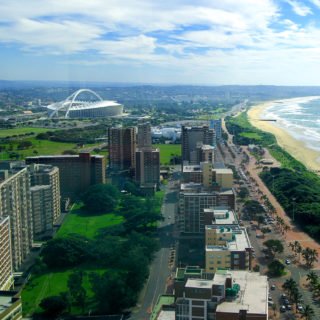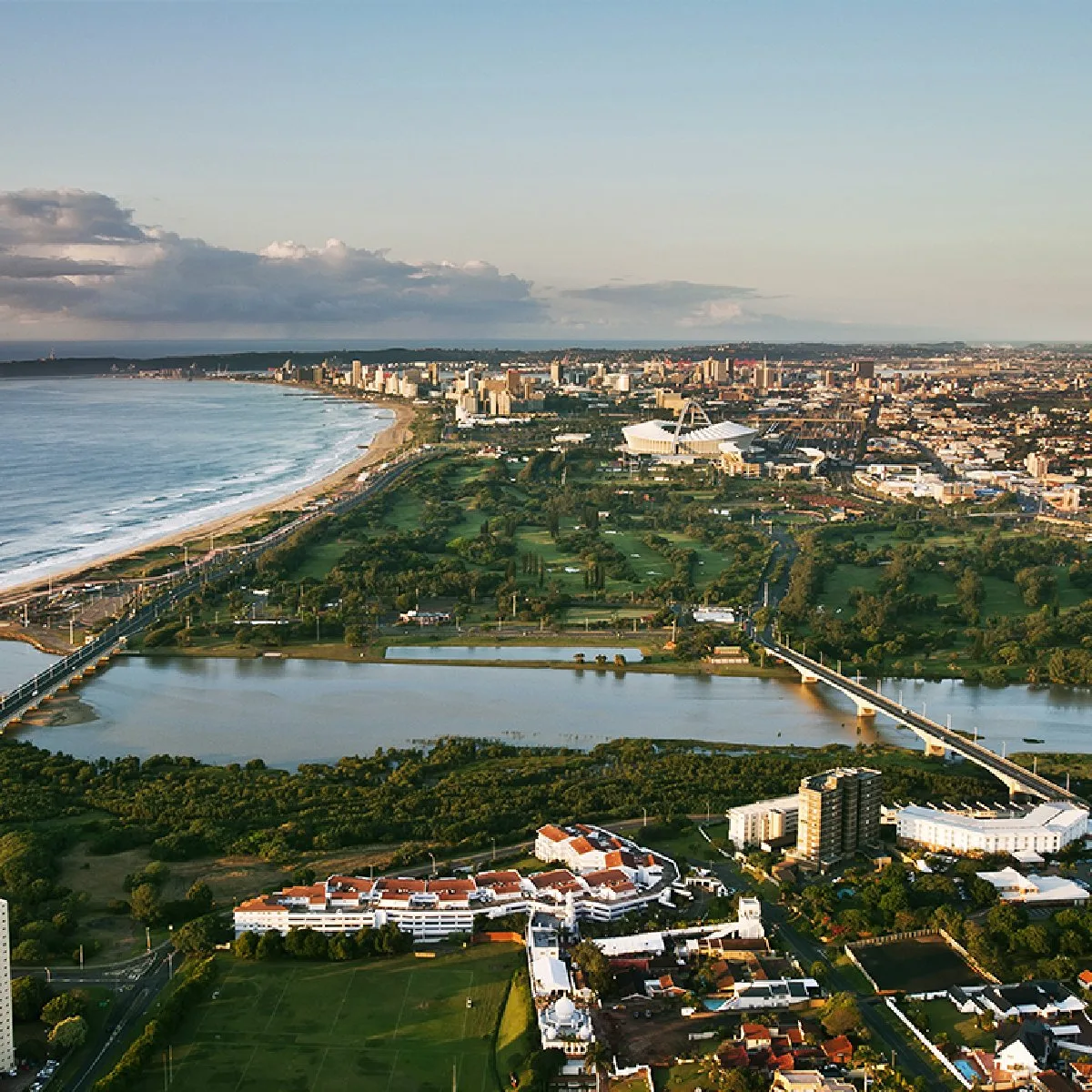News Alert. Durban has just been named the greenest city in the world. That’s according to the Husqvarna Urban Green Space Index (HUGSI) 2019. An AI-powered satellite solution to help decision makers monitor the proportion and health of green spaces in cities across the globe.
Durban is the greenest city in the world
Durban took first place out of 98 cities.Followed by Rio de Janeiro, Brazil in second place and Austin, USA in third. They all score high on the percentage of green space combined with great distribution and health of vegetation.
Greenest city winners per region are:
- Africa: Durban, South Africa
- Central East Asia: Beijing, China
- East, south-East Asia & Oceania: Auckland, New Zeeland
- Europe: Geneva, Switzerland
- Latin America: Rio de Janeiro, Brazil
- North America: Austin, USA
- South and West Asia: Dhaka, Bangladesh
The Husqvarna Urban Green Space Index 2019 was launched as part of the Husqvarna Living City event in Gothenburg, Sweden. International thought leaders, industry people and media from the green space community attended the event.
The Index applies computer vision and deep learning techniques to satellite images. This reveals key insights into the current state and historic development of vegetation and the surrounding environment in urban areas. This AI shows just how green cities really are. It also alerts urban planners to any possible densification which reduces the amount of urban green spaces.

Greenest City Spaces
Green spaces are the lungs of cities. Improving air quality, managing flooding and rainwater and contributing to the physical and mental health of citizens. As urbanization continues, it is vital to monitor the proportion between grey and green areas.
“Safeguarding our urban green spaces is a huge part of our global culture. The team works hard to help create a sustainable future through innovative products that are built around low carbon emissions and community work,” explains
Jenna Robinson, Husqvarna South Africa marketing manager.
Safeguarding Green Areas in Cities
Anders Johanson, CTO, Husqvarna Group adds that the company believes that AI and emerging technologies will play a key role in the future of green space management.
“With HUGSI, we want to draw attention to the importance of green spaces. Also, to empower decision makers to safeguard green areas in cities by providing them with indisputable facts. Digitalizing green space management will enable predictive care of parks, improving recreational and environmental values, as well as operational efficiency,” he says.
The HUGSI 2019 Index
The HUGSI 2019 Index provides green insights covering all C40 cities plus Brussels (Belgium), Marseille (France), Geneva (Switzerland) and Gothenburg (Sweden). This makes for 98 cities in 51 countries rated on a number of green Key Performance Indicators (KPI’s) including:
- Highest percentage of urban green space
- Best health of vegetation
- Highest percentage of urban areas covered by grass
(and bushes shorter than 1 m) - Highest percentage of urban areas covered by trees
(and bushes higher than 1 m) - Best distribution of green space
- Most green space per capita

“We are extremely happy and proud to award the winning cities with this acknowledgement. But we also believe that all cities in the index are winners. With this new data set they get the facts needed to monitor and drive the development for even greener and healthier development of their cities. Hopefully other cities can find the insights from the HUGSI-index inspirational and start their journey towards greener urban environments.”, says Johanson.
The Greenest City Strategy for Durban Paid Off
The Index recognized Durban for sustainability and greening initiatives that are aimed at safeguarding green spaces by ensuring they are not jeopardised by urbanization.
Deputy Head of Parks, Leisure and Cemeteries, Sibusiso Mkhwanazi said the recognition was as a result of the City’s greening strategy and policy. This directs planting of 80% indigenous trees and 20 % exotic plants.
“The strategy is setting aside huge natural and green areas known as Dmoss as part of spatial planning. It informs us on what to plant, how to plant and where to plant more trees. Furthermore, as part of creating an urban forest, the city has a programme where we plant trees to rehabilitate areas that have been eroded. This effort has then contributed to us being the greenest city,” said Mkhwanazi.
Did you know that spending time in parks can boost your mental health? Read more.



![women [longevity live]](https://longevitylive.com/wp-content/uploads/2020/01/photo-of-women-walking-down-the-street-1116984-100x100.jpg)










